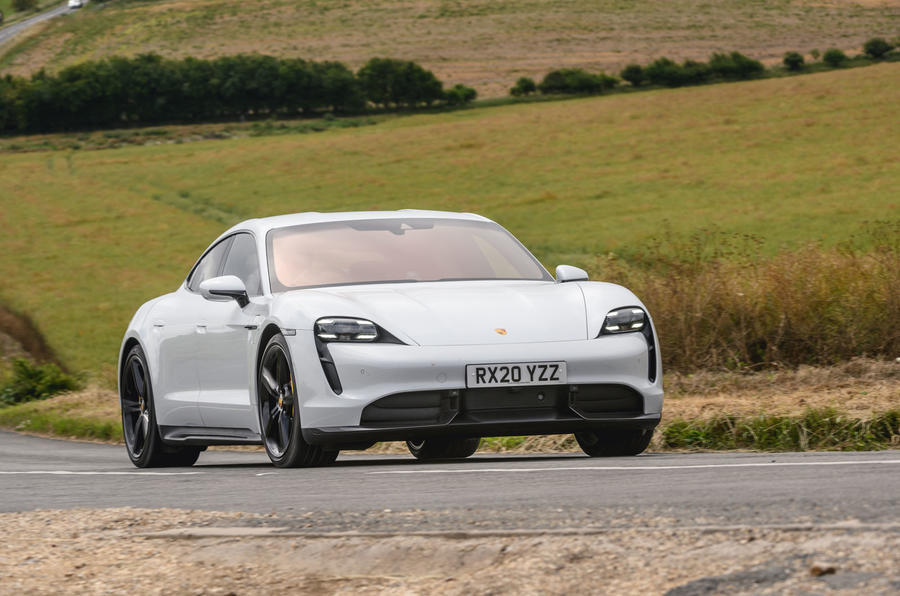Porsche has updated its new Porsche Taycan electric saloon for 2021 with new personalisation options and a series of technological tweaks aimed at improving ease of ownership.
Heading up the improvements is a new Functions on Demand (FoD) service that allows owners to purchase and install new features over-the-air without visiting a dealership, including Power Steering Plus, lane-keeping assistance and Porsche Innodrive, an advanced adaptive cruise control programme.
Customers can choose to buy the new features or, for the lane-keeping assistance and Innodrive functions, subscribe on a monthly basis with a three-month trial period. Once specified, the new feature is sent to the car via satellite and activated within a few minutes.
Also new for the 2021 model year is a battery preservation function that restricts charging capacity where appropriate to reduce power loss. At an 800v Ionity rapid-charging station, for example, drivers can slow the charging speed from 270kW to around 200kW using a new charging mode selector on the central display.
The Taycan can also now be specified with a power guard function, which prevents a system overload when charging domestically and allows for it to be charged using excess electricity generated by a building’s solar panels.

As a byproduct of the battery optimisation tweaks, the top-rung Taycan Turbo S has shaved 0.2sec off its 0-124mph time and now completes the sprint in just 9.6sec.
Additionally, the 2021 Taycan will do away with the need for drivers to use charging scheme membership cards at public chargers. A new Plug and Charge system being rolled out in the UK next year will allow owners to plug in immediately on arrival, with their authentication data saved to the vehicle and payments processed automatically.









Join the debate
Add your comment
Might be wrong.
Correct me if I'm wrong, but, isn't BMW doing this too?
What happened to 20 minute charging times?
"Also new for the 2021 model year is a battery preservation function that restricts charging capacity where appropriate to reduce power loss. At an 800v Ionity rapid-charging station, for example, drivers can slow the charging speed from 270kW to around 200kW using a new charging mode selector on the central display". Yeah 800v means a strain on the supply side which will have to supply twice the current and we are back to I2R losses. It might mean smaller wire in the actual vehicle however power cannot be created or destroyed...blah blah blah.
Zee Germans honing on on Elon
Copycats :)
Tesla braved the path and now might be killed by copycats who can do it better.
Please return to your Tesla
Please return to your Tesla fanboy forums thank you xxx
Cenuijmu wrote:
Tesla is the worlds most valuable car manufacturer, it has access to the most and cheapest capital and has demonstrated that it can turn said capital into factories to make EVs faster and more cheaply than legacy manufacturers.
It really wouldn't matter if it made worse EVs than the legacy manufacturers, the plants it has in the build phase will allow it to build more than 2 million cars a year by 2022 (this is why it is the most valuablecar manufacturer). Porsche intend to build 40,000 EVs by then.
If you add up the total planned volumes of EVs that legacy manufacturers have stated they will build collectively they don't get up to the volumes Tesla will be able to produce with the factories it has at the build and planning stage.
The annology is the iPhone vs Android, even though Android phones broadly match the capability of iPhones it still has a high % of the market and also makes by far the most money.
I'd argue that at best you have some EVs which can match Tesla in some areas (generally ones important to motoring journalists, ike subjective quality and driving feel) while being a model cycle ahead of the Model S, 3 and X all of which will likely be refreshed fairly soon (the made in Germany Model 3 and Y will for example be structurally different to the made in America cars)